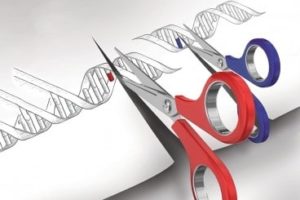rna interference
Protein may be key to new treatment in a childhood cancer
After analyzing hundreds of proteins produced by the DNA of tumor cells, researchers have identified one protein that may be central to a new treatment for the often-fatal childhood cancer neuroblastoma. Oncologists hope to translate the finding int…
MicroRNA-TP53 circuit connected to chronic lymphocytic leukemia
HOUSTON – The interplay between a major tumor-suppressing gene, a truncated chromosome and two sets of microRNAs provides a molecular basis for explaining the less aggressive form of chronic lymphocytic leukemia, an international team of researchers…
Tiny molecules protect from the dangers of sex
DURHAM, N.C. — Pathogenic fungi have been found to protect themselves against unwanted genetic mutations during sexual reproduction, according to researchers at Duke University Medical Center. A gene-silencing pathway protects the fungal genome fr…
Virtual research institute needed to unlock RNA’s promise
Strasbourg, 11 October 2010 – A Europe-wide network of labs focusing on RNA research is needed to make the most of RNA’s high potential for treating a wide range of diseases. The recommendation for this virtual research institute comes from a panel …
Rice study examines how bacteria acquire immunity
HOUSTON — (Sept. 15, 2010) — In a new study this week, Rice University scientists bring the latest tools of computational biology to bear in examining how the processes of natural selection and evolution influence the way bacteria acquire immunity…
Scientists find what type of genes affect longevity
Tracing all the genetic changes that flow from a single mutation, UCSF scientists have identified the kinds of genes and systems in the body that ultimately allow a doubling of lifespan in the roundworm, C. elegans. Humans share many of these genes, and the researchers think the new findings offer clues to increasing human youthfulness and longevity as well.
Researchers silence genes with new approach
Researchers have developed a way to exploit RNA interference for the first time to silence genes in a wide variety of mammalian cells, including embryonic cells. The study will appear in the Feb. 17 edition of Nature Genetics. This new approach allows genes to be switched off by inserting short pieces of ribonucleic acid (RNA) into developing cells. It is currently being used to help researchers uncover the function of the more than 30,000 genes found in humans, as well as in animal models of important diseases.
Gene silencing technique gets patent
An important discovery in modern molecular biology is that double-stranded RNA can quash the activity of specific genes in plants, animals, and fungi. In 1997, Dr. Andrew Fire of the Carnegie Institution of Washington and Dr. Craig Mello of the University of Massachusetts Medical School, and their team found that by specially designing RNA with two strands they could silence targeted genes. Their discovery, called RNA interference (RNAi) was recently patented (US Patent 6,506,559 B1), and it has been widely licensed in the U.S., Europe, and Japan.
Researchers achieve germline transmission of ‘gene knockdown’ in mice
RNA interference (RNAi) has emerged as an extremely versatile and powerful tool in biomedical research. A new study published in the February issue of Nature Structural Biology reports the creation of transgenic mice in which inherited RNAi lowers or silences the expression of a target gene, producing a stable “gene knockdown.” This finding extends the power of RNAi to genetic studies in live animals, and has far-reaching implications for the study and treatment of many human diseases.



